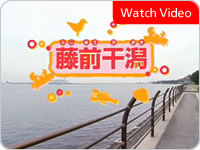- Top Page >
- About Conservation
About Conservation

Conservation Background
Fujimae-higata is surrounded by a metropolitan harbor and industrial district. Therefore, the surrounding has been subjected to large-scale landfills and only a small portion of the natural environment has survived. At one time, a plan existed to establish a garbage disposal site at a section of the tidal flat. However, the plan was abandoned due to the final decision of citizens, researchers, and government. This event served as the impetus for major advancements in the city of Nagoya’s efforts to reduce the amount of garbage.
In this way, Fujimae-higata has become not only an important location for conservation of the natural environment, but has also been imbued with great meaning as a turning point for greatly advancing the actions taken by a large city in order to realize a sustainable society. Fujimae-higata possesses great potential as an area that offers both enjoyment and the opportunity to consider the wonder of life, the beauty and richness of the tidal flat environment, and the form of a sustainable society.
Conservation System
![]()

This brochure shows you the birds that inhabit the Fujimae-higata, a government-designated Wildlife Protection Area, and a birds-eye view of the entire area.
Issued by Chubu Regional Environment Office
In November 2002, Fujimae-higata was registered as a Ramsar Convention site in recognition of the area’s status as a wetland of international significance. Registration was performed for the following 3 reasons:
(1)The area periodically supports over 20,000 water birds.
(2)The area supports vital stages in the life cycle of animals and plants.
(3)The area is considered as vital for the existence of internationally endangered species and ecological systems.
In order to be registered as a Ramsar site, it is necessary to take actions to conserve the natural environment for the future. Such actions include the designation of Wildlife Protection Areas and Special Protection Areas.











